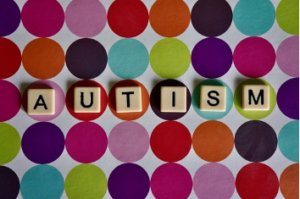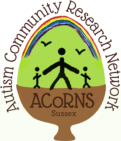Terminology to think about
We started off the conversation talking about the useful table included in the reading which gave alternatives for different terminology we can use when talking about autistic people, for example, instead of using ‘at risk of autism’ to use ‘increased likelihood’. There is a drive to specifically change the language we use to be more positive and less patronizing. We said it is a relatively easy and seemingly small thing to do but it can have a large impact. We also noted the change from person-first to identity-first language is now preferred by the majority of the autistic community, but highlighted that different groups and each individual has their own preference. It is important that we respect this and asking is the best way to know! We then went on to think about how some young autistic children might not understand/have the ability to tell us their preference and it is often up to the parent or carer to decide this. Similarly with non-verbal autistic people how can they explain to us what they prefer to be called? This is something we need to consider.
to know! We then went on to think about how some young autistic children might not understand/have the ability to tell us their preference and it is often up to the parent or carer to decide this. Similarly with non-verbal autistic people how can they explain to us what they prefer to be called? This is something we need to consider.
Behaviours that challenge
We then spoke about a specific term used in the table which was replacing ‘challenging behaviours’ with a ‘meltdown’. We initially thought this was a very emotive word that might not be the best for explaining these behaviours. However, once we discussed this further we understood that a meltdown seems to explain something that is out of that individual’s control, whereas challenging behaviours might be a term that seems like it’s the individuals fault. Who exactly is it a challenge to? The individual? The professional? We said it is the perception of the observer that finds the behaviour challenging and not the autistic individual’s fault. We then reminded ourselves that when autistic people display these types of behaviours it can be a way of communicating unmet needs and needs to be taken seriously. Therefore, we should adapt the language to reflect this. We tried to come up with alternatives that might better explain what is happening. Some members suggested ‘externalising behaviours’ and ‘transferring behaviours’ as it is the transferring of internal emotions to external behaviours. But this could explain all behaviours. We also discussed the term ‘behaviours that challenge’ which seemed preferable as it is the observer’s perception of the behaviours that is the challenge, not the autistic individual.
Language around diagnosis and in medical contexts
We then started to discuss the challenges involved in the language used around diagnostic processes. The majority of diagnostic manuals such as DSM-5 has criteria for autism diagnosis by comparing the individuals with neurotypical people. Currently there is a standardised medical framework in place to use across the NHS where you are scored compared to a neurotypical child. The diagnostic process is very deficit-based for individuals with autism and does not recognise strengths children have. This is a challenge because we need to come up with another way to diagnose individuals using standardised measures. We suggested research should be done to identify an autistic norm to use instead of a neurotypical one. We could also focus on what autistic people do better than neurotypical. It should not always have to look like autistic people can’t do what neurotypical people can.
The future: Using positive language
We need more research to be done looking at autistic children that target their strengths. Research should highlight positives in autism as well as recognising the real difficulties people experience. One member mentioned some research into moral reasoning where you had to donate money, with one condition where other people knew how much you donated vs one where no one knew what you donated. Autistic people donated the same amount in the conditions whereas neurotypical people donated less when people weren’t watching. The researchers concluded that autistic people were insensitive to the context and rigid. However, we felt this was an unfair and inadequate conclusion. It could equally have been concluded that autistic people are more likely to consistently do the right thing regardless of what others think of them. Similarly, with the double empathy problem, it is seen that autistic people can’t communicate with neurotypical people. Yet, communication is relational between two people, so if it does not work then it is not one person who caused it but the interaction of both. Both sides need to be understood so perhaps more research should focus on how to improve communication from both perspectives. Researchers into autism need to be mindful of deficit accounts and consider strengths, which will have a big impact on the autistic society. An example of this is the Our stories project ran by ACoRNS creates digital stories that reflect the strengths not just the challenges of autistic children. Each child creates a video showing what they like and their strengths which can be used to show friends, family and professionals who they are as a person.
them. Similarly, with the double empathy problem, it is seen that autistic people can’t communicate with neurotypical people. Yet, communication is relational between two people, so if it does not work then it is not one person who caused it but the interaction of both. Both sides need to be understood so perhaps more research should focus on how to improve communication from both perspectives. Researchers into autism need to be mindful of deficit accounts and consider strengths, which will have a big impact on the autistic society. An example of this is the Our stories project ran by ACoRNS creates digital stories that reflect the strengths not just the challenges of autistic children. Each child creates a video showing what they like and their strengths which can be used to show friends, family and professionals who they are as a person.
